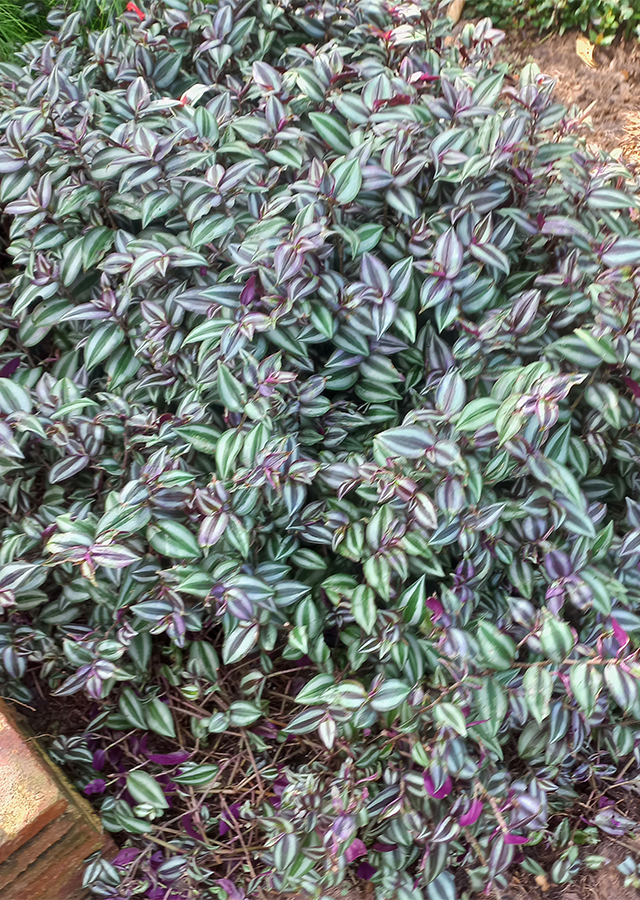Traditional Herbs from Tradescantia zebrina
flu
- Prepare dried leaves of the zebra monkey ear plant.
- Boil until boiling.
- Let it warm/cool.
- Strain then drink.
increase_stamina
- Prepare dried leaves of the zebra monkey ear plant.
- Boil until boiling.
- Let it warm/cool.
- Strain then add lemon juice.
- Drink to increase stamina.
What is Tradescantia zebrina Looks like??



Parts of Tradescantia zebrina that could be used
- Leaves
- All Parts of the Plant
Tradescantia zebrina Distribution
Zebra monkey ear is a weed plant originating from Mexico, and has been widely introduced in various parts of the world as a garden ornamental plant and is popular as a ground cover plant. Today, this species is also found in Australia, various Pacific islands, the Caribbean, parts of Central and South America, the southern United States, Tanzania, East Asia and Southeast Asia. This species is an important plant with several traditional medicinal uses in many countries around the world. In China, this species is highly recommended for patients suffering from kidney disease, where the zebra monkey's ears are believed to improve kidney function. Meanwhile, in Mexico, this plant is used to treat digestive disorders such as diarrhea. Based on study results, it is reported that this plant has shown several significant pharmacological activities such as anticancer, antioxidant and antibacterial.Agroecology of Tradescantia zebrina
Zebra monkey's ear is a weed in waste areas, disturbed sites, roadsides, urban undergrowth, riverside vegetation, open forests and woodlands in subtropical and warm climates. It can be found, both in the lowlands and highlands, at altitudes up to 1,400 m above sea level. This species generally likes semi-open or shaded areas that are bright and moist, but can also grow well in full sun. Likes moist, fertile, well-drained organic soil with soil acidity (pH) in the range of 6-8.
Morphology of Tradescantia zebrina
- Roots\u00a0fibrous, light brown.
- Stems are round, soft, juicy, green with purplish spots, produce a thin lymph when cut, have nodes and have roots at the nodes or nodes of the stem, hairy,
- Leaves are paired and opposite, hairy, dark green to purple, with 2 longitudinal silver lines on the upper surface (adaxial), and evenly purple on the lower surface, oval in shape, flat leaf edges, pointed tip (acuminate), base cuneate (border or triangular breech), asymmetrical at the base, fleshy.
- Flowers have three corollas, ovate in shape, fused at the bottom into a narrow white tube, pink or purple-magenta, small in size and appear in terminal groups. Supported by 2 narrow protective leaves. Stamens number 6.
- Fruit is a small capsule with 3 chambers.
- Seeds number 1-2 per capsule, brown in color. grayish.
Cultivation of Tradescantia zebrina
Vegetative propagation of plants (stem cuttings and stolons).
Tradescantia zebrina, more details :
Chemical Content of Tradescantia zebrinaß-sitosterol, 3β, 5α, 6β-trihydroxy stigmast, succinic acid, 3-ecdysone, sterols, saponins, flavonoids, and tannins.
Benefits of Tradescantia zebrina
Treats kidney disease, urinary tract infections, hypertension, tuberculosis, uterine disorders, digestive disorders, diabetes, coughs, flu, hemorrhoids, conjunctivitis, poisonous snake bites, boils, vaginal discharge, increases stamina, reduces swelling, triggers menstruation, and cleanses the blood.
Simplisia of Tradescantia zebrina
- Prepare fresh zebra monkey ear leaves, wash thoroughly with running water then drain.
- Dry in the sun or in an oven at a temperature\u00a040\u00b0C until the moisture content\u00a010%.
- Store in a clean and airtight place .
Another Facts for Tradescantia zebrina :
Synonym of Tradescantia zebrinaCyanotis zebrina (Bosse) Nees
Habitus of Tradescantia zebrina
Herb. Annual herb, grows creeping and hanging down, up to 15 cm high
Habitat of Tradescantia zebrina
- Forest", "Coastal", "Roadside", "Land
No comments:
Post a Comment